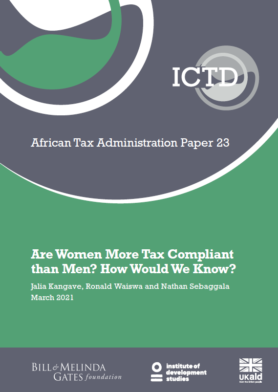ATAP 23
Most research on tax compliance, including research on gender differences in compliance, is based on one of two problematic sources of data. One is surveys enquiring about attitudes and beliefs about taxpaying, or actual taxpaying behaviour. The other is experiments in which people who may or may not have experience of paying different types of taxes are asked to act out roles as taxpayers in hypothetical situations.
Much more accurate and reliable research is possible with access to ‘tax administrative data’, i.e. the records maintained by tax collection organisations. With tax administrative data, researchers have access to tax assessments and tax payments for specific (anonymised) individual or corporate taxpayers. Further, tax administrative data enables researchers to take account of a phenomenon largely ignored in more conventional compliance research.
Tax payment is best understood not as an event, but as part of a multi-stage process of interaction between taxpayers and tax collectors. In particular, actually making a tax payment typically represents the culmination of a process that also involves: registering with the tax collecting organisation; filing annual tax returns; filing returns that indicate a payment liability; and receiving an assessment. The multi-stage character of this process raises questions about how we conceptualise and measure tax compliance.
To what extent does ‘compliance’ refer to: registration, filing, accurate filing, or payment? The researchers employed this framework while using tax administrative data from the Uganda Revenue Authority to try to determine gender differences in compliance. The results are sensitive to the adoption of different definitions of compliance and subject to year-to-year changes. Finding robust answers to questions about gender differences in tax compliance is more challenging than the research literature indicates.
